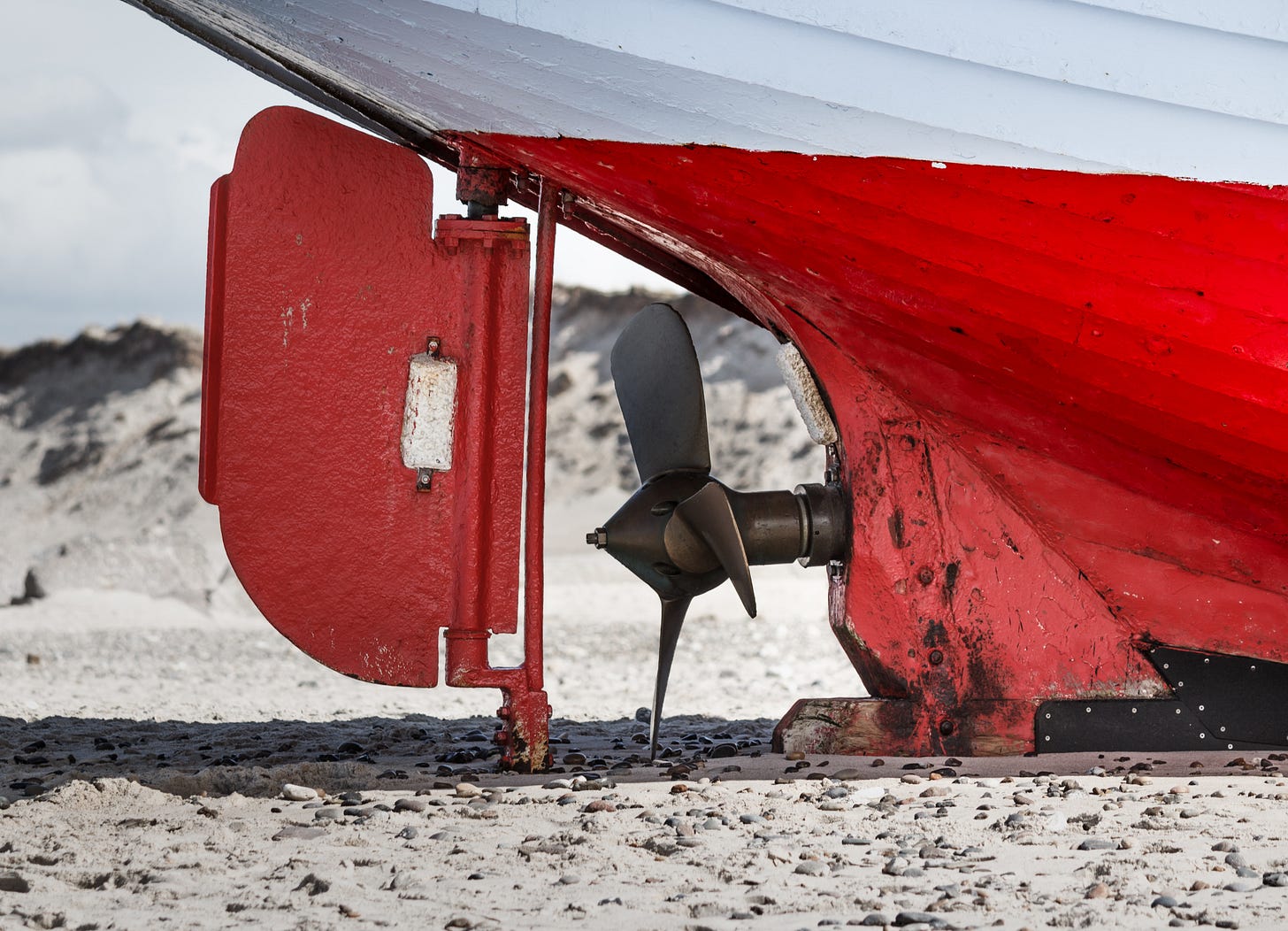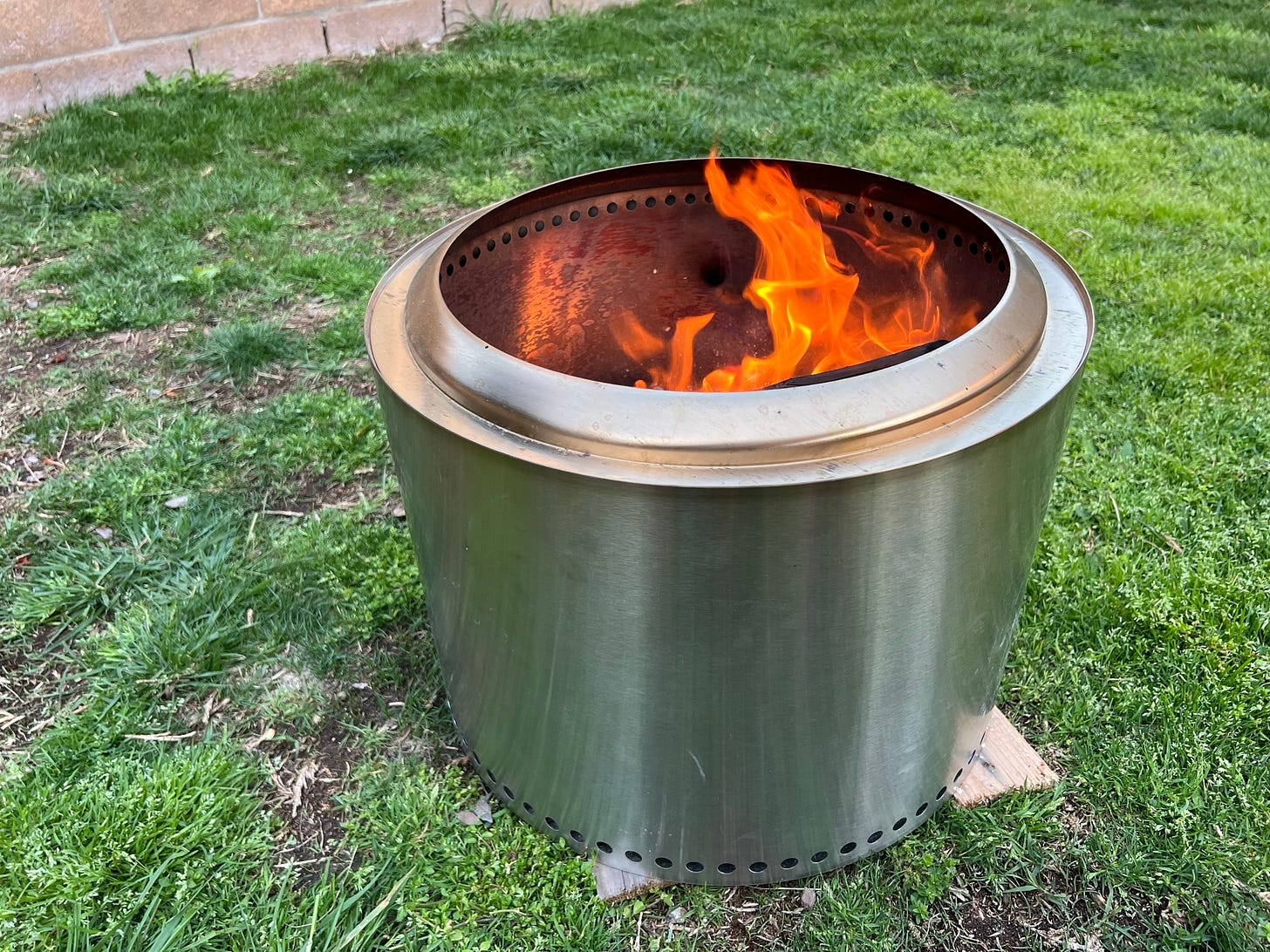In the summer months, it is hard to beat time on the lake. And when I’m on the lake, one of my favorite things to do is ride a jet ski.
In addition to being a lot of fun, jet skis are also a great example of the importance of a bias toward action, one of the key dispositions of a prototyping mindset. When you take a course to learn how to safely operate a jet ski, the one thing that they drill into your head above all else is that you must apply the throttle to steer.
That advice, it turns out, applies not just to driving a jet ski. It also is a great mental model to make progress on many of life’s complex problems.
Under the hood of a PWC
A jet ski, unlike a traditional boat with a motor and rudder, is propelled by a jet drive engine. The figure below from Kawasaki’s patent shows the basic operation.

Water enters on the left-hand side of the figure, drawn in by the impeller assembly (items 8-11, for those of you keeping track at home). Then, the jet of water is expelled out the rear of the propulsion unit, thrust through a pivoting nozzle shown on the right-hand side of the diagram (items 17-21). This nozzle is mounted on an axis (see pivot bolts, item 14), which is controlled by turning the handlebars.
This design is all fine and good, except for one thing: when the engine is off, you have no way of controlling where you are going. In contrast, a more traditional propeller-driven boat allows you to turn even if the engine is off because the boat has a rudder.

Navigating through life is a lot like driving a jet ski. If you’re not actively moving in a direction, you don’t have any control over where you’re going. If you’re not continuously trying things out, it’s easy to get stuck sitting still and fruitlessly turning life’s proverbial handlebars. Trying to steer without giving it some gas is pointless.
It is true that if you turn on the engine and give it a little throttle, you might not go in the right direction. But once you start to move in a direction, even if it’s the wrong one, you can adjust your heading and correct course.
Bias toward action is crucial

A bias toward action is a fundamental part of the Prototyping Mindset. Just like you can’t steer a jet ski when the engine is off, you can’t make progress on the complex and interconnected problems that are part and parcel of life without making a plan and trying things out.
If you’re not trying things out, don’t kid yourself into thinking that you’re going to be able to move in the direction you want. You’re just as hopeless as if you were sitting in the middle of the lake, frantically turning the handlebars on a jet ski and wondering why you’re drifting away from where you want to go.
Got a comment? Drop me a line below to let me know.
The Book Nook
Better late than never, right? Somehow, it took over three years for my friend Francis Su’s book, Mathematics for Human Flourishing, to make it to the top of my reading list. I’m so glad it did.
What I love most about this book is the way that Francis connects the technical aspects of mathematics and his experience of them with our foundational desires as humans. The book is organized into 13 chapters, where each chapter focuses on a different virtue.
In addition to the thoughtful reflections under each theme, the entire story is woven together with written correspondence between Francis and Christopher Jackson. Chris discovered a love for math while in a federal penitentiary and corresponded with Francis about his journey via letters and email. Chris’s reflections add richness to the story and highlight the beauty of our shared humanity.
Even if math was never quite your thing (perhaps especially if math was never quite your thing!), you should pick up Francis’s book to experience the awe not only of the theory of mathematics but of its human pursuit.
The Professor Is In
Leonard Fund Dinner
Every college should have a resource like Harvey Mudd’s Leonard Fund. The Leonard Fund at Mudd supports informal interactions between faculty and students. It’s an honor to have a group of students take the time to organize a group and ask to join you for a meal.
This past weekend, I had the chance to host a Leonard Fund dinner with a group of five Mudders. While I enjoy going out to eat at a restaurant with students, it is a special treat when I am able to have them over to the house. This weekend, we had some pizza on the Ooni and finished off the evening with some conversation around the fire pit. These are the types of interactions that make life as a faculty member at a place like Harvey Mudd so rich and fulfilling.
Mudd Talk: The Power of the Prototyping Mindset
Last week, I also had the opportunity to give a talk about some reflections on the Prototyping Mindset for a talk series organized by the Harvey Mudd Alumni Association. The video was posted yesterday on YouTube and is linked below. If you enjoy these newsletters, you’re sure to find something to spark your curiosity in the talk.
Leisure Line


Went to our favorite neighborhood taco joint on Saturday after a fun morning at the KidSpace museum. Hard to beat their fresh chips and guac. Oh, and the tacos are good too!
Still Life
Broke out the Solo Stove for the first time in 2023 this past weekend. Feels like summer is just around the corner!





Dude the Ira Glass quote you use in your presentation is gold.